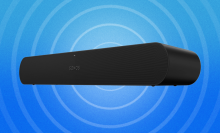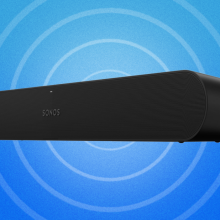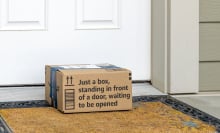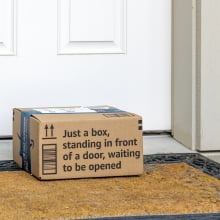Silent Hill 2 is for the sickos. Yeah, I said it.
After that initial launch trailer that had even the die-hard Silent Hill fans biting their nails in worry, the Polish developer Bloober Team actually pulled off something incredible. Who saw that coming? It's not just a solid remake; it’s the kind of shot in the arm this series has been begging for. In a twist of fate, Silent Hill 2 just got its very own Resident Evil 2 Remake moment — an adaptation so well-executed, it might just be what the franchise needed to claw its way back from the fog.
Remakes are a tricky balancing act. On the one hand, they need to stand on their own, offering something fresh and modern. On the other, they’re forever tethered to the original, carrying the weight of fan expectations and nostalgia. The balance must be respected.
Striking that sweet spot is no easy feat, but Bloober Team nails it here. They’ve taken a beloved horror classic and given it a sleek, modern facelift, all while paying serious respect to its roots and the lasting impact it’s had on the genre. It's both a love letter and a fresh chapter — and it works.
Silent Hill 2 plot and characters

Disclaimer: I’ve never played the 2001 original Silent Hill 2. First off, I was three when it came out, and second, I used to hate scary video games. It wasn’t until my freshman year of college (thanks, Resident Evil 7) that I finally got over my aversion to horror games. So, with all that said, Bloober Team’s remake absolutely scared the hell out of me at times. And you should know right now — this review isn’t going to nitpick gameplay or story differences compared to the original. This is purely about my fresh experience, and yeah, it was terrifying.
The plot of Silent Hill 2 centers on James Sunderland, a man still reeling from the loss of his wife, Mary, who passed away three years ago. Out of nowhere, James receives a mysterious letter from Mary herself, claiming that she’s waiting for him in their "special place" — a spot in the quiet town of Silent Hill where they once vacationed.
When James arrives, it doesn’t take long for things to spiral into full-blown nightmare territory. The town is drenched in an eerie fog, and it quickly becomes clear that something is very wrong. As James presses on, he finds himself grappling with disturbing, surreal encounters that challenge everything he knows about his sanity, his morality, his memories, and even who he really is. The further he goes, the more Silent Hill turns into a twisted reflection of his deepest fears and guilt.
Along his journey, James encounters a handful of other lost souls who, like him, have been drawn to the fog-choked town of Silent Hill. There’s Angela Orosco, a deeply troubled young woman searching for her missing mother, whose unstable mental state makes her interactions unsettling and tragic. Then there’s Eddie Dombrowski, an insecure man harboring a lot of anger, especially after years of being bullied about his weight. He’s on the edge of breaking — and wandering into Silent Hill isn’t helping.

James also crosses paths with Laura, a strange, seemingly fearless child who has an inexplicable connection to Mary, James’ late wife. And finally, there’s Maria, a woman James meets who bears an uncanny resemblance to Mary, yet with a more provocative, almost unsettling presence. Each character is caught in their own personal nightmare, mirroring James’ dark descent, and adding to the town’s suffocating mystery.
As a character, James can feel like a bit of a wet blanket. He’s barely holding it together, forgetful, and often reckless in ways that make you want to shake some sense into him. But that’s also the point — something is clearly off about him. Luke Roberts brings James to life with a performance that nails the mild-mannered, almost painfully dull nature of the character. There’s a sense that something inside James is broken, and whether that’s from his wife’s death or something far more sinister is part of the mystery. You can never quite tell what’s going on beneath the surface, and Roberts walks that line well.
The rest of the English voice cast is equally impressive, delivering performances that bring out the character's motivations and inner turmoil in a way that keeps you hooked. Every interaction feels purposeful, and the chemistry between characters adds to the tension. There’s a distinct Twin Peaks-esque vibe to the whole thing, with the schlocky, surreal edge working as a kind of dark, twisted relief from the heavier moments. The voice work, paired with Akira Yamaoka’s haunting score, really elevates the atmosphere, giving the game a quirky yet deeply unsettling quality.
Silent Hill 2 gameplay mechanics
Combat in Silent Hill 2 is downright unsettling — not because it’s poorly executed, but precisely because it’s effective. While the game uses a standard third-person action shooter approach, the melee combat feels viscerally uncomfortable, perfectly matching the game’s eerie atmosphere.

The physicality of the melee attacks feels sluggish and raw, adding to the game’s unsettling tone, while the firearms give you a brief sense of power — until the next grotesque creature lunges at you. I hope you're not squeamish because the sounds and sheer brutality of James' every stomp on a downed enemy are downright disturbing. Each hit feels savage, with the accompanying sickening crunches, squishes, and wails from James, adding an unsettling layer to his character.
What I love about this is that it’s more than just a gameplay mechanic — it’s a window into the darker side of James. He may deny it, but there’s a violent streak within him, and his brutality hints at deeper, unresolved issues. The fact that many of the enemies he faces are grotesque, feminine figures raises unsettling questions about his views on women and his relationship with his wife.
It's just great storytelling. Here, everything fits — James' inner turmoil, his violent tendencies, and the distorted nature of the enemies all bleed seamlessly into both the narrative and the gameplay.

That said, combat encounters with the game’s main enemies are thankfully sparse. Most of the time, Silent Hill 2 won’t force you into battles with more than one enemy at a time. But when it does — and it will at key moments — it can be truly frustrating. The combat isn’t designed to handle swarms of enemies, and juggling multiple threats at once feels clunky and awkward. It’s a deliberate choice that amps up the tension, but it also exposes the limitations of the game’s combat system. When you’re cornered by a group of foes, you really feel the pressure, but not always in a fun way.
Enemies in Silent Hill 2 hit hard, and they don’t take kindly to being underestimated. The game has a nasty habit of punishing reckless combat with a surge of aggression from its monsters. Take the Bubble-Head Nurses, for example — they’ll grab your weapon if you’re too overzealous, tossing you aside and leaving you wide open for serious damage. It’s a reminder that you can’t just button-mash your way to safety; strategy and patience are crucial here.
One of my personal favorite enemies is the Mannequin, a bizarre, headless, armless creature with four legs that moves in unsettling, jerky motions. These creepy dummies will hide before jumping out at you, making encounters with them especially tense. The game provides you with a radio that emits static, getting louder as enemies draw near. Mannequins, however, are tricky, as they tend to hide in shadows or behind objects. The static is often faint, giving you just enough warning without a clear idea of where they’re lurking. They’ll pop out from behind tight corners, under beds, or any spot you least expect. To make matters worse, even during combat, they’ll retreat and hide if you move too far away, forcing you to chase them down or risk getting ambushed all over again.
Throughout James’ nightmarish trek, there are eight different combat weapons at his disposal, though players will only have access to six during their first playthrough. These include the Wooden Plank, Steel Pipe, Great Knife, Handgun, Shotgun, and Hunting Rifle. For much of the game, you’ll primarily rely on the Plank, Pipe, Handgun, and Shotgun.
These weapons form the backbone of the combat loop, paired seamlessly with the game's intricate puzzle-solving. Much of your time in Silent Hill 2 will be spent exploring large, central locations like the Wood Side Apartments or Brookhaven Hospital. In these eerie, labyrinthine spaces, you’ll be scouring for keys, codes, and other items that unlock doors, slowly unraveling the path forward. Each of these areas acts as a major hub — solving them opens up new parts of Silent Hill that were previously blocked off by towering walls, sinkholes, or other nightmarish barriers.
Silent Hill 2 sound design and soundtrack

I have to take a moment to talk about the sound design in Silent Hill 2 — it’s incredible. The atmosphere it creates is genuinely unnerving, veering between moments of eerie quiet and bursts of disturbing, otherworldly sounds. It keeps you constantly on edge, and there are times when the silence itself is scarier than the monsters.
That said, if I had one gripe with the sound design, it’s that there are moments where the backing track while exploring feels oddly out of place. Specifically, at times, it makes a sound that’s almost identical to the “you’re about to be caught” music from The Last of Us. It’s loud, overbearing, and makes me think I’m about to get jumped by an enemy, even when there’s nothing around. But not in a way that feels intentional — it’s legitimately distracting. Every time it happens, it pulls me out of the experience, and it’s frustrating when the soundtrack is unintentionally working against you, instead of immersing you further into the game’s world.
Regardless of those minor hiccups, the sound design does a massive job of immersing you in the eerie, fog-filled world of Silent Hill. The haunting soundtrack that accompanies you as you wander through the town is pitch-perfect. There’s a slow, ominous hum that builds tension in the quieter moments, creating an ever-present sense of dread. And when things do get loud, the shift is jarring, ratcheting up the intensity to match the horror on screen.
What really sells the atmosphere, though, is the attention to detail in the environmental sounds. You can hear every squelch of James’ footsteps as he trudges through water or mud, every drip and creak that echoes through the empty halls of dilapidated buildings. It’s these small, unnerving sounds that keep you constantly on edge, reminding you that even in silence, you’re never truly alone.
Silent Hill 2 performance
For the most part, Silent Hill 2 runs like a gem, and that’s saying something given how many games that have come out in the middle of the PlayStation 5’s lifecycle have been plagued with performance issues.

It’s a testament to the work Bloober Team has put in, especially when compared to recent releases like Dragon’s Dogma 2, Final Fantasy XVI, and Black Myth: Wukong — all fun games, but with a tendency to run like absolute crap at times.
That’s not to say Silent Hill 2 is perfect. I did encounter a couple of hiccups. One particularly annoying bug left me stuck on the back of a pickup truck while trying to fight an enemy, forcing me to reload a save. And yeah, there were a few instances of screen tearing, but nothing game-breaking. Overall, the game performs smoothly, which, in this era of day-one patches and constant updates, is a rare treat.
Graphically, Silent Hill 2 looks stunning, but it’s also clear as day that this was made in Unreal Engine. There’s something distinct about Unreal Engine 3D models — they’ve got this particular look with slightly stiff movements and that weird uncanny valley effect in their faces. It’s not a deal-breaker, but it's jarring, to say the least.
Is Silent Hill 2 worth it?
Whether you're a longtime fan of the original or stepping into Silent Hill for the first time, Bloober Team's remake delivers a haunting experience that’s hard to shake.

From the unsettling atmosphere to the visceral combat and psychological depth, the game excels at drawing you into its twisted world. The storytelling is gripping, with characters like James Sunderland and the cast of disturbing personalities he meets adding layers of complexity that go beyond typical horror fare. The remake respects the source material while modernizing it for today’s audience, and even if you’ve never played the 2001 original, it still stands as a deeply unsettling and rewarding journey.
That’s not to say it’s perfect. The combat, while serviceable, can feel clunky — especially when dealing with multiple enemies — and the occasional technical hiccup can pull you out of the immersion. The sound design, while mostly excellent, has its frustrating moments with an overbearing soundtrack that can confuse more than terrify. And sure, the Unreal Engine's telltale stiffness and uncanny valley visuals might make you feel like you’ve wandered into The Room at times, but it’s a minor distraction in an otherwise gorgeously realized world.
Ultimately, Silent Hill 2 is a love letter to psychological horror fans and a solid step forward for the franchise. With its chilling atmosphere, well-paced story, and genuinely terrifying moments, it’s definitely worth your time.
For more Mashable game reviews, check out our OpenCritic page.
Topics Gaming PlayStation Mashable Choice





















